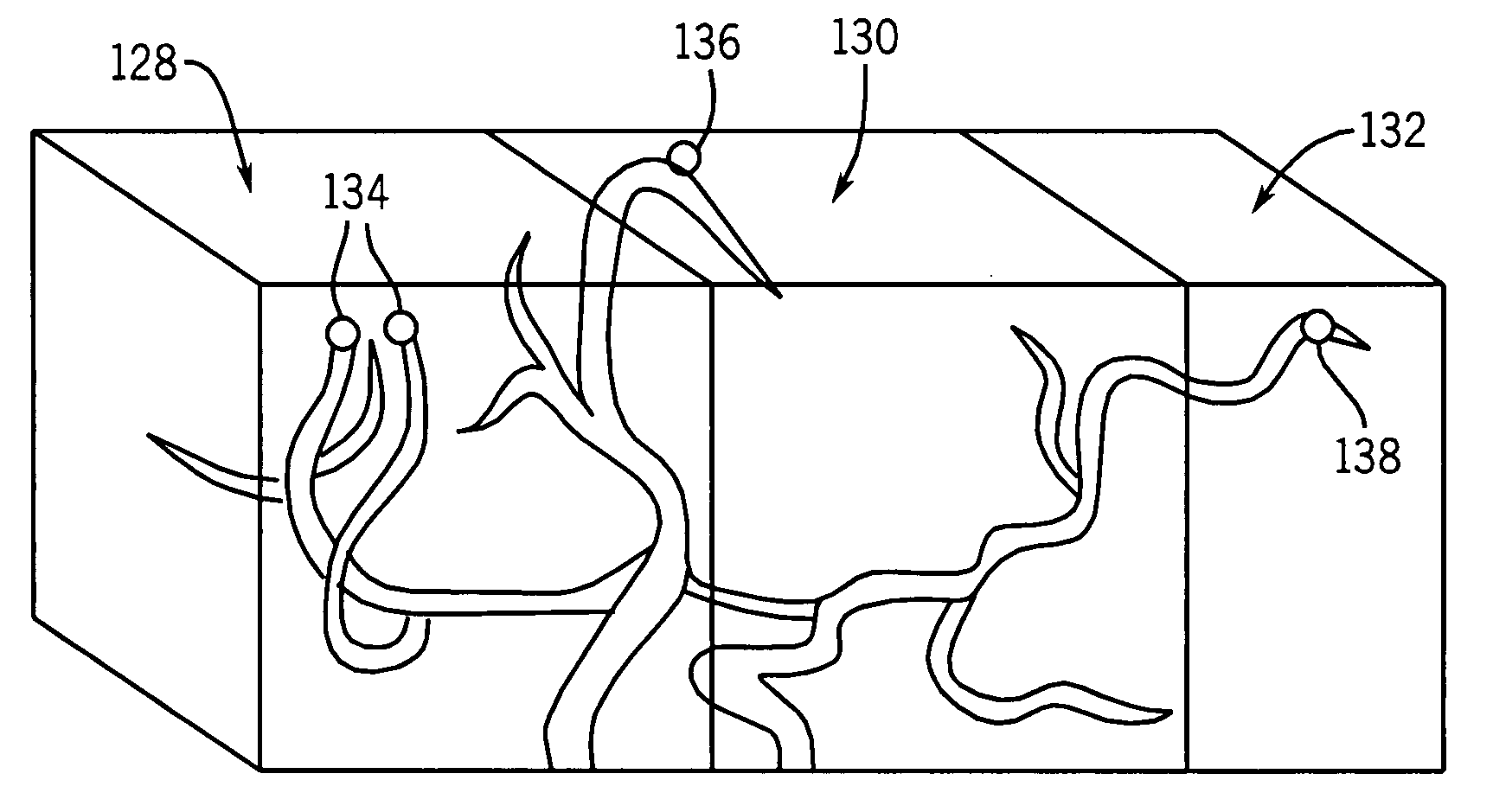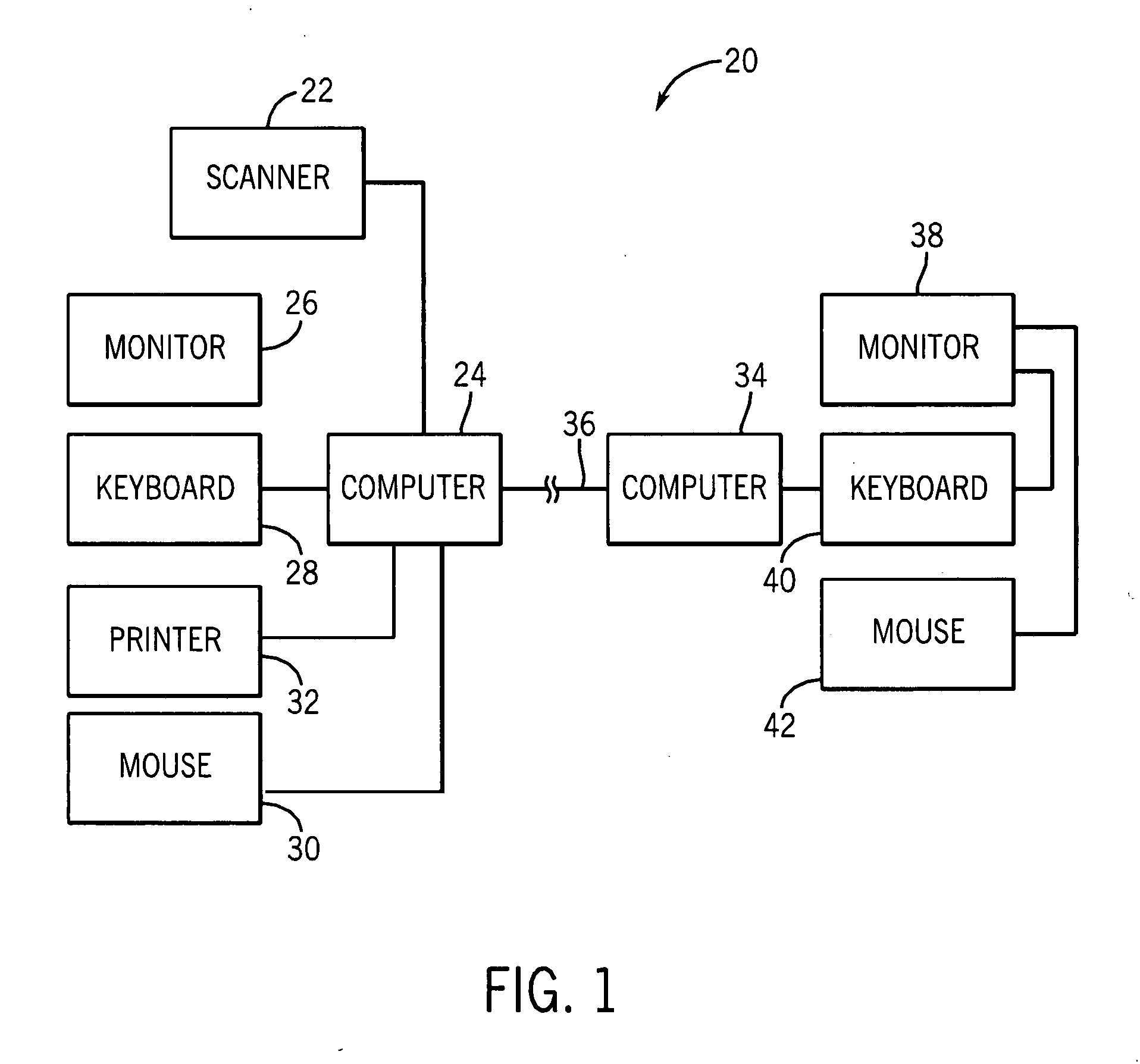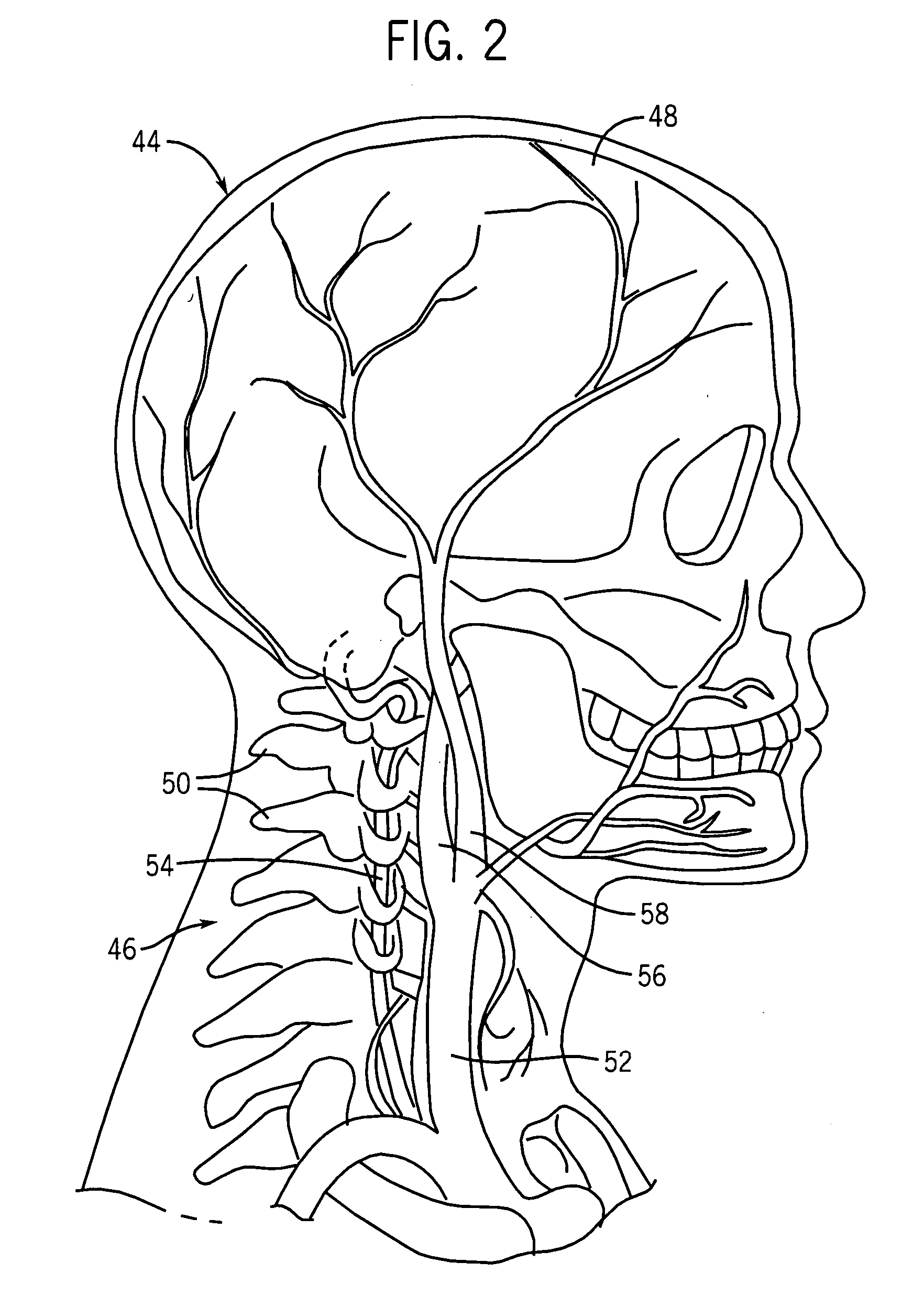Vascular image extraction and labeling system and method
a technology of vascular image and labeling system, applied in the field of medical imaging, can solve the problems of affecting the usefulness of imaging technologies, relative difficulty in discerning a particular structure of interest from its background, and the possibility of still existential problems in identifying an anatomical featur
- Summary
- Abstract
- Description
- Claims
- Application Information
AI Technical Summary
Problems solved by technology
Method used
Image
Examples
Embodiment Construction
[0017]Referring generally to FIG. 1, a diagrammatical view of a medical imaging system 20 having a scanner 22 that is operable to scan a patient in three-dimensions and to produce medical image data of the internal anatomy of a patient is provided. The scanner 22 may utilize any of a variety of different imaging modalities, such as Computed Tomography (CT), Magnetic Resonance (MR), or Positron Emission Tomography (PET). In this embodiment, the medical image data obtained by the scanner 22 is in a digital form. Three-dimensional images are comprised of voxels. A voxel in three-dimensional medical imaging is analogous to a pixel in two-dimensional imaging. A voxel is a volume element represents a value in a grid in three-dimensional space. The scanner 22 is operable to assign values to the voxels. The value of a voxel may represent various properties. In CT scans, the values are Hounsfeld units that represent the opacity of material to X-rays. In MR imaging, the voxels represent a dif...
PUM
 Login to View More
Login to View More Abstract
Description
Claims
Application Information
 Login to View More
Login to View More - Generate Ideas
- Intellectual Property
- Life Sciences
- Materials
- Tech Scout
- Unparalleled Data Quality
- Higher Quality Content
- 60% Fewer Hallucinations
Browse by: Latest US Patents, China's latest patents, Technical Efficacy Thesaurus, Application Domain, Technology Topic, Popular Technical Reports.
© 2025 PatSnap. All rights reserved.Legal|Privacy policy|Modern Slavery Act Transparency Statement|Sitemap|About US| Contact US: help@patsnap.com



